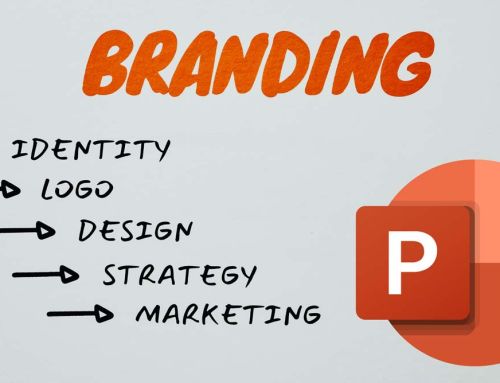
Designer Power Point Presentations
Are you tired of using the same old Powerpoint templates and designs that fail to capture your audience’s attention? Look no further – in this article, we will reveal the secrets behind creating eye-catching Designer Power Point Presentations that will leave a lasting impression. Whether you are a business professional delivering a pitch, a student presenting a project, or a teacher giving a lecture, having a visually appealing and engaging designer Power Point Presentations is key to capturing your audience’s attention and delivering your message effectively. But how do you create a PPT presentation that stands out from the rest?
In this article, we will explore the latest trends in PPT Powerpoint presentation design, providing you with practical tips and techniques to unlock the secrets of eye-catching Power Point presentations. From choosing the right colour schemes and fonts to incorporating multimedia elements and creating compelling visuals, we will guide you through the step-by-step process of designing a presentation that will wow your audience. Don’t settle for boring and forgettable Power Point presentations any longer. Get ready to unleash your creativity with these valuable insights and expert advice using designer Power Point Presentations.
Introduction
In today’s fast-paced world, effective communication is essential for success. PowerPoint presentations offer a powerful tool for conveying information, engaging audiences, and leaving a lasting impression. A well-designed and visually appealing presentation can captivate your audience, enhance information retention, and reflect positively on your professionalism.
Designer Power Point Presentations – The Power of Visual Communication
- Engagement: Visually appealing PowerPoint presentations can capture and hold the attention of your audience, making your message more memorable.
- Retention: The human brain processes visual information more quickly and effectively than text. By using visuals, you can help your audience better understand and retain your key points.
- Professionalism: A polished and professional PPT presentation can enhance your credibility and establish you as an expert in your field. Designer Power Point Presentations
Understanding the Principles of Visual Design
To create visually appealing PowerPoint presentations, it’s essential to understand the fundamental principles of visual design:
- Simplicity: Keep your slides clean and uncluttered. Avoid overwhelming your audience with too much information.
- Hierarchy: Use visual elements to prioritise key points and guide your audience’s attention.
- Contrast: Create visual interest by using contrasting colors, fonts, and sizes.
- Alignment: Align elements on your slides to create a sense of order and balance.
- Proximity: Group related elements together to improve readability and understanding.
Choosing the Right Colour Scheme and Fonts
- Colour Psychology: Colours can evoke different emotions and convey specific messages. Choose a colour scheme that aligns with your Powerpoint’s presentation’s tone and content.
- Font Selection: Select fonts that are easy to read and visually appealing. Avoid using too many different fonts, as this can create a cluttered and unprofessional look.
Using High-Quality Images and Graphics in your PPT Presentation
- Image Quality: Use high-resolution images that are relevant to your topic and enhance your message. Avoid blurry or pixelated images.
- Graphics: Incorporate graphics, such as infographics, icons, and diagrams, to simplify complex information and make your presentation more engaging. This can help with designer Power Point Presentations
Incorporating Effective Slide Layouts and Transitions
- Slide Layouts: Choose slide layouts that are appropriate for your content and consistent throughout your presentation.
- Transitions: Use subtle transitions between slides to create a smooth flow and avoid distracting your audience.
Adding Engaging Animations and Multimedia Elements
- Animations: Use animations to reveal content gradually, add visual interest, and emphasise key points.
- Multimedia: Incorporate videos, audio clips, or interactive elements to enhance your presentation and provide a more immersive experience.
Organising Content and Creating a Compelling Narrative
- Storytelling: Structure your presentation like a story, with a clear beginning, middle, and end. This will help your audience follow your message and retain key points.
- Logical Flow: Ensure that your slides are presented in a logical order and that there are smooth transitions between topics.
Tips for Creating Visually Appealing Powerpoint Charts and Graphs
- Data Visualisation: Use charts and graphs to simplify complex data and make it more understandable.
- Consistency: Ensure that the style of your charts and graphs is consistent with the overall design of your presentation.
Testing and Refining Your PPT Presentation
- Proofreading: Carefully proofread your presentation for typos, grammatical errors, and inconsistencies.
- Practicing: Rehearse your presentation several times to ensure a smooth delivery and identify any areas that need improvement.
By following these guidelines, you can create eye-catching and effective Designer Power Point Presentations that captivate your audience and deliver your message with impact.
Conclusion: Elevating Your PPT Presentations with Design Techniques
Remember, a well-designed PowerPoint presentation enhances communication, leaving a lasting impression on your audience. By applying these principles, you’ll create impactful slides that resonate with viewers and can make them look more like designer Power Point Presentations
If you would like us to design your Power Point presentation, please contact us at A7Designs. We will be happy to help!


